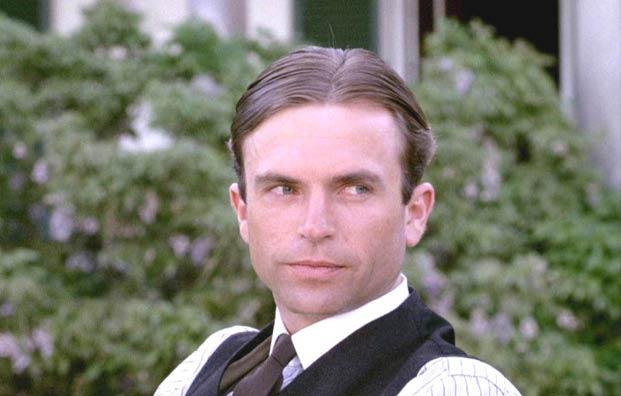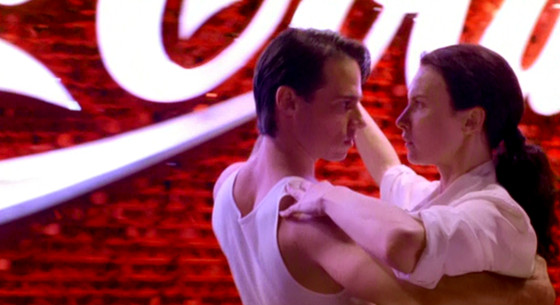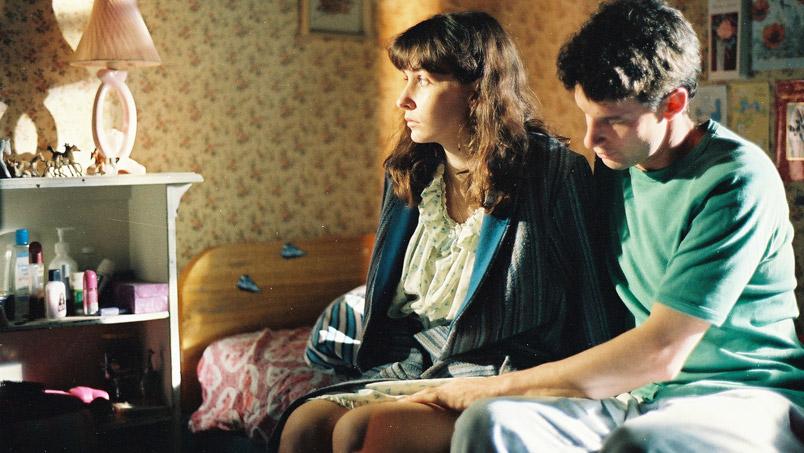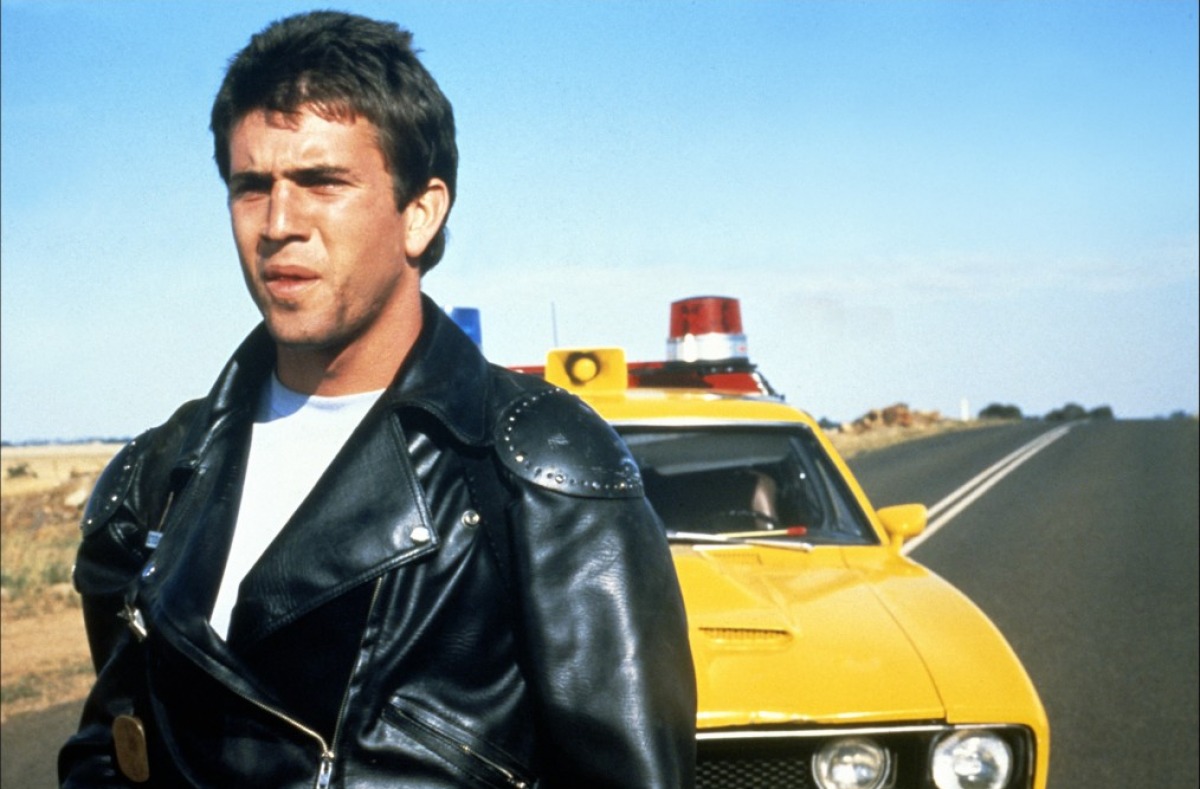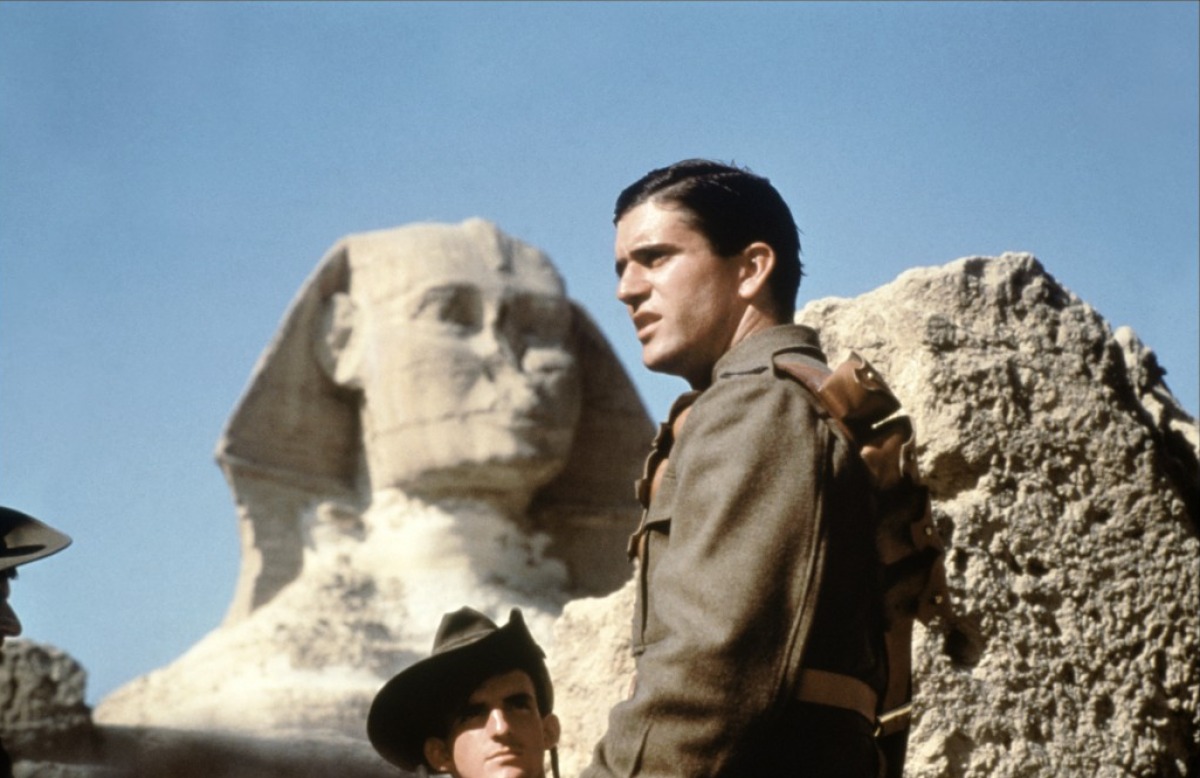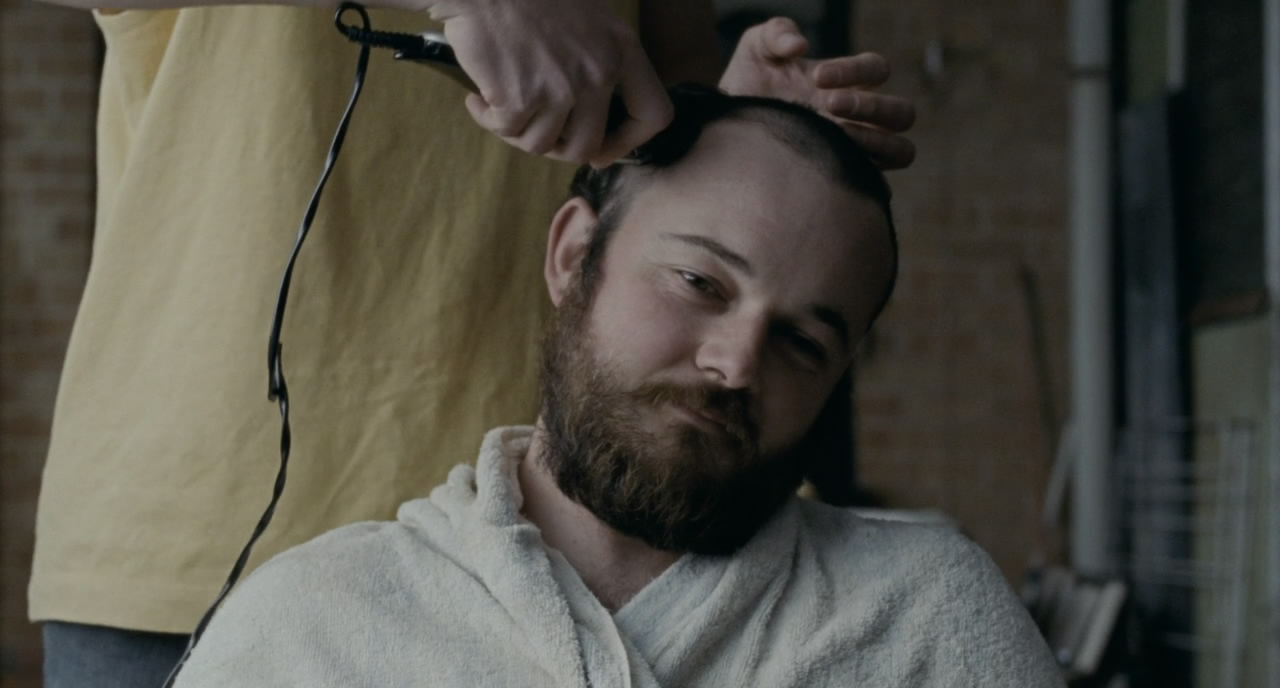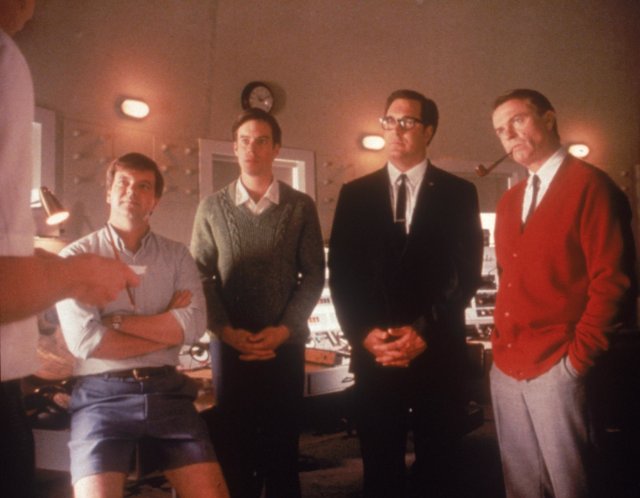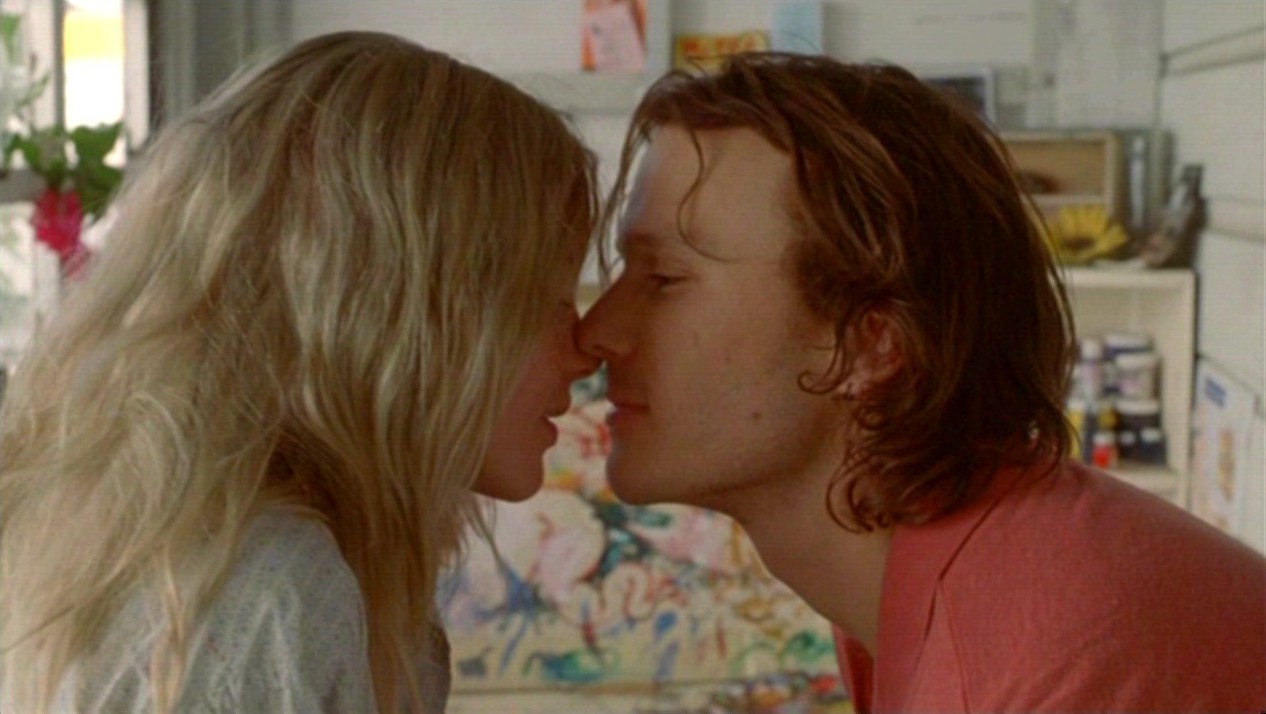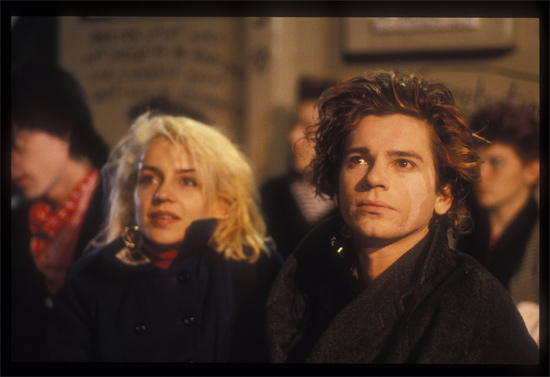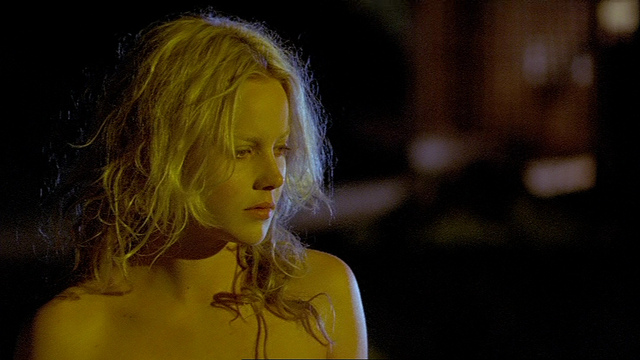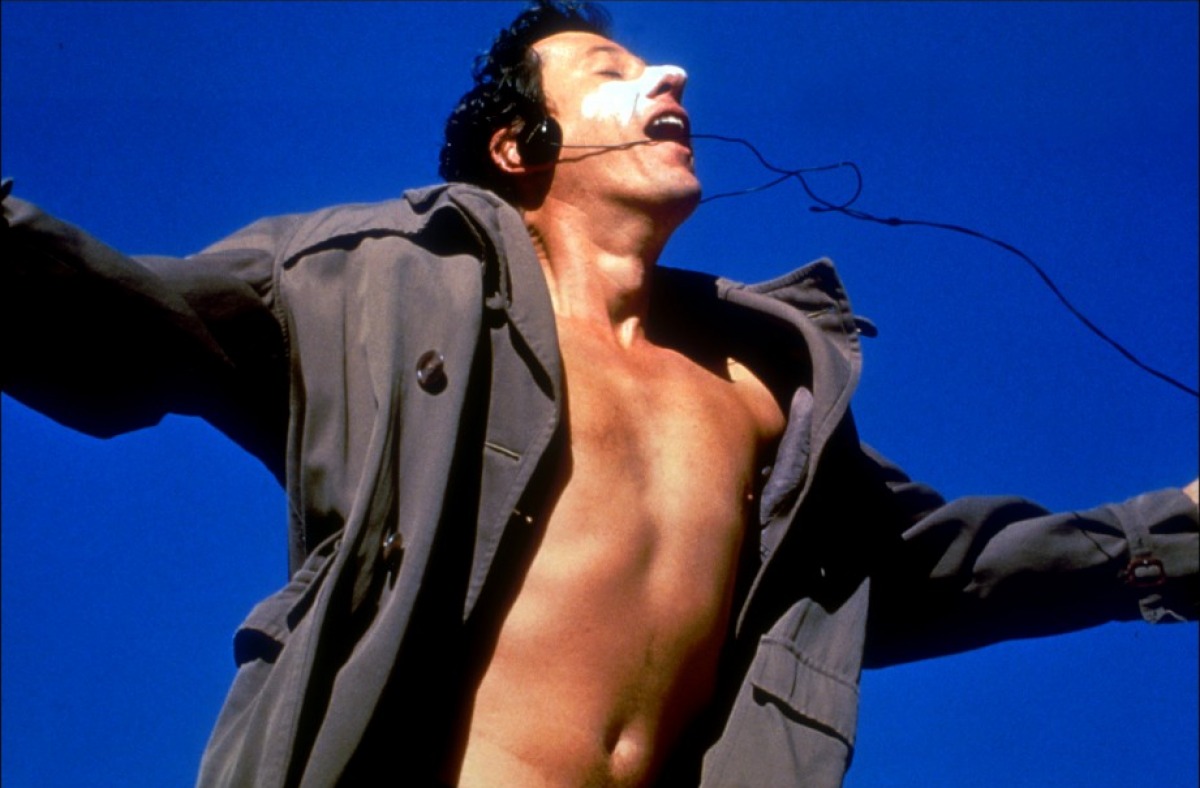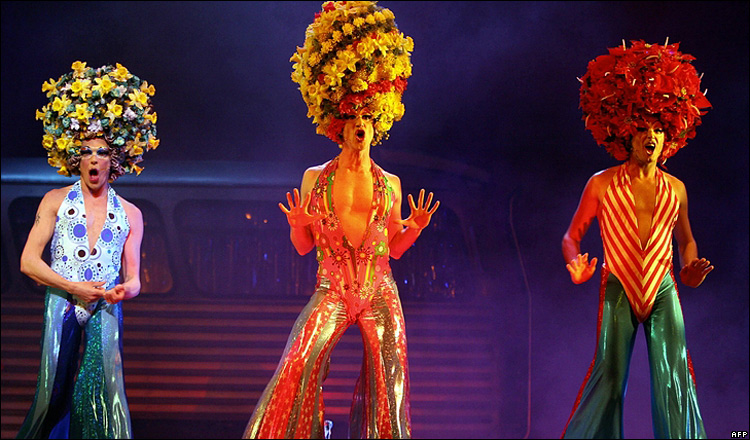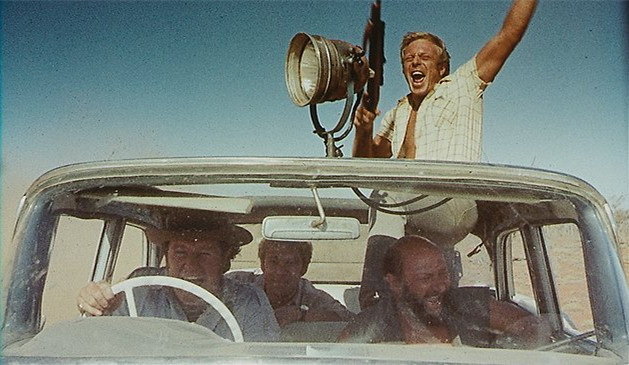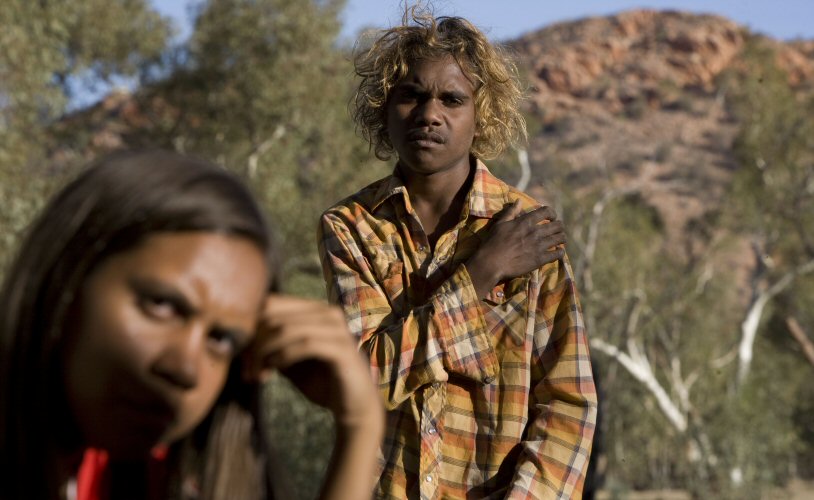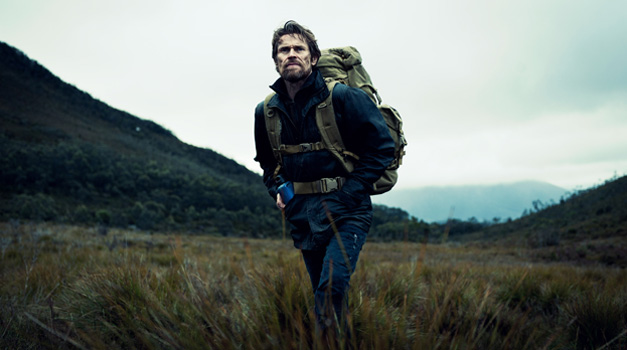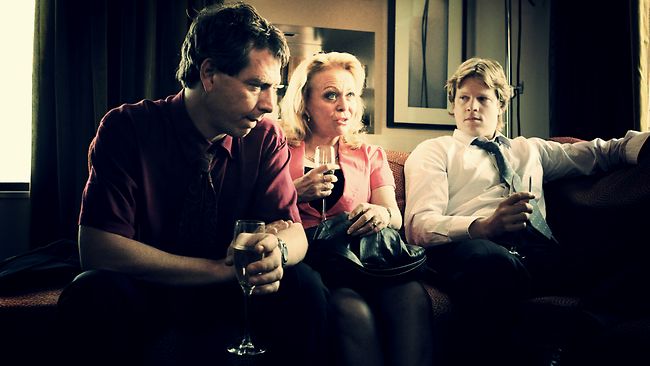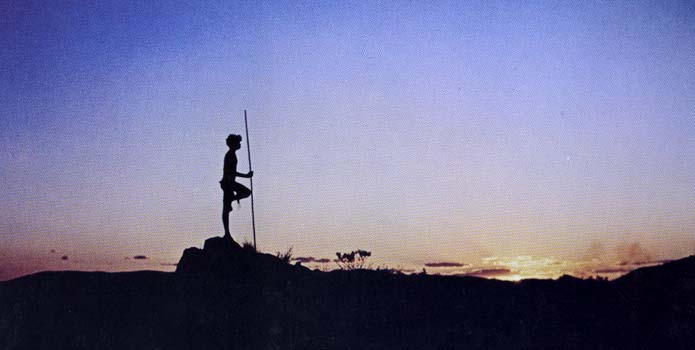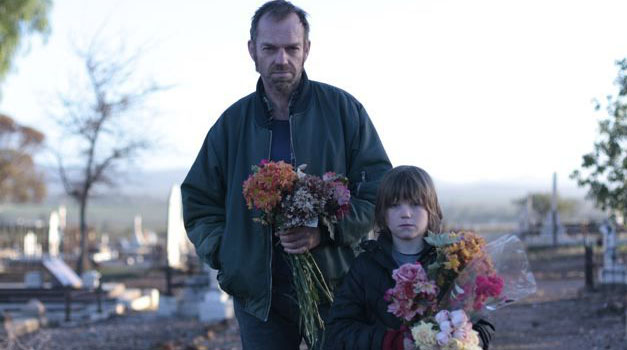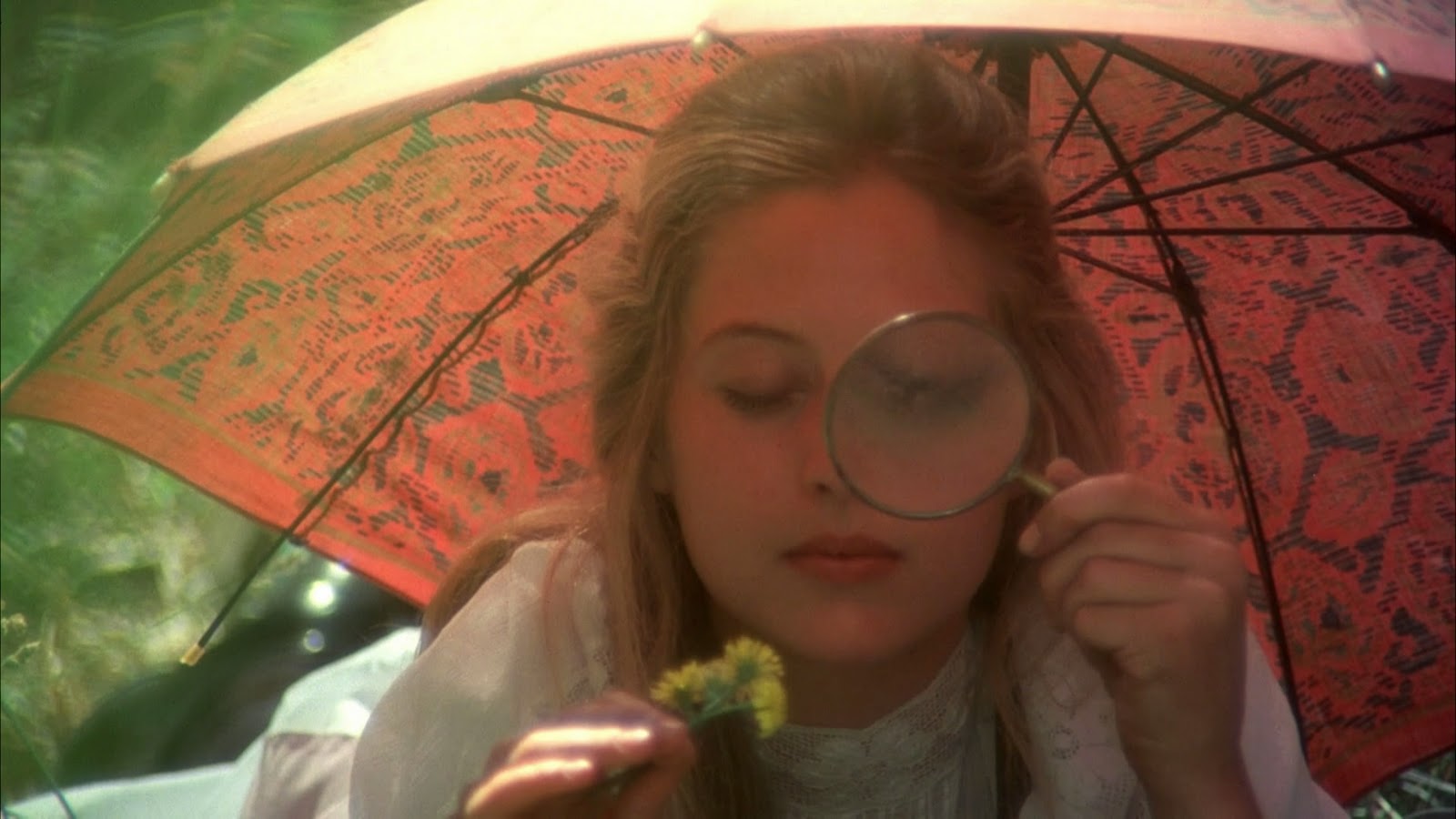Australian Cinema has never been content to tell a normal story. It finds the weird, the beatific, and the controversial in all it looks at. What was Peter Weir’s mind frame when in 1971, he shot a film in his own house on a remote island near Sydney where several visitors arrive at the expensive guest house and are forced act out their violent private fantasies and participate in a series of games about death and murder? Homesdale seems like it could have been made by Greenaway or even Lynch but instead is an important short that insinuates Weir’s future screen masterpieces and Australian Cinema as a whole.
Interestingly, a seldom know fact is that the first ever feature length film was an Australian one, shot in 1906 and immortalizing the infamous outlaw Ned Kelly with ‘The Story Of The Kelly Gang’. Since then, antipodean auteurs of the screen have been weaving their imagerial visions into challenging portraits of Outback Australia, racism, crime and hauntingly beautiful stories. Here are 20 essential Australian films you need to watch.
20. Strictly Ballroom (1992)
Every director must have a trilogy, in Lars Von Triers case three or four. This is Baz Luhrmann’s first film in his Red Curtain Trilogy (followed by Romeo + Juliet and Moulin Rouge). ‘Strictly Ballroom’ is Eccentrically idiosyncratic, as is its director with stylish embraces that plays with clichés and stereotypes, mocking and embracing them at the same time.
Luhrmann is the epitome of either love or hate and the visual style used here may be too bright, gaudy and exaggerated for some tastes, yet he treats his characters with compassion, which makes ‘Strictly Ballroom’ such an engaging wildly off-beat comedy.
19. Sweetie (1989)
The first sparks of a shining star. Opening monologue begins with our paranoid protagonist remembering as a child the roots of the tree in her back yard crawling up under the house and into her bed. Thus leaving her with a fear of her own roots; her family.
Jane Campion’s debut feature of a hazardous relationship between sisters could have easily been a straightforward narrative of family drama but instead, in the hands of an Australian, this darkly humorous picture works its way into an oddball portrait of joyfully demanding characters. This original film plumbs the psyches of these women and gives a skewed insight into an Aussie family who has gone wrong.
18. Mad Max (1979)
Director George Miller who would later bring us Babe and Happy Feet begins his career with this debut feature of a post-apocalyptic dystopian Australia, credited as further opening up the market for Australian New Wave cinema to flourish. This was the first Aussie film shot in widescreen and starred a relatively unknown Mel Gibson and pretty much the entire cast of Stone (1974).
Gaining praise from the likes of Quentin Tarantino and Guillermo Del Toro, ‘Mad Max’ was noted as championing the blossoming renegade Ozploitation movement. The documentary Not Quite Hollywood: The Wild, Untold Story of Ozploitation is a fantastic starting point for those interested in the significant influence Aussie cinema had during it weird and wonderful Golden age?
17. Gallipoli (1981)
Peter Weir brings us ‘Gallipoli’, the heroic tale that follows two idealistic young friends, Frank (Mel Gibson) and Archy (Mark Lee), who join the Australian army during World War I and fight the doomed Battle of Gallipoli in Turkey.During the course of the movie, the young men slowly lose their innocence about the purpose of war. The climax of the movie occurs on the Anzac battlefield at Gallipoli and depicts the futile attack at the Battle of the Nek on 7 August 1915.
Following the likes of the great Australian New Wave film Breaker Morant, ‘Gallipoli’ shares the recurring themes of the Australian identity, such as mateship and larrikinism, the loss of innocence in war, and the continued coming of age of the Australian nation and its soldiers.
16. Muriel’s Wedding (1994)
‘Muriel’s Wedding’ resides in the same world of Campion’s ‘Sweetie’, albeit slightly, and only slightly, a bit more normal one. Muriel is a socially inept young woman played by the hilarious Toni Collette, who is deeply unsatisfied with her Porpoise Spit life. Finding solace in ABBA and fantasy weddings, Muriel hides from the mean world until she meets her old school friend Ronda who encourages Muriel to take control of her life.
Premiering at the 1995 Cannes Film Festival, ‘Muriel’s Wedding’ was a sleeper hit but eventually managed to connect with all the other oddball, gawky misfits. The films good heart keeps it from ever making real fun of Muriel and instead leaves us with a melancholic undertone of big laughs.
15. Lantana (2001)
The film begins with a shot of overgrown, flowering lantana and we hear the sound of the Australian wilderness, the drone of life, hesitant machine music bordering on psychosis. We are reminded of Lynch’s Blue velvet as we delve deep into the scrub and instead of finding seething bugs or even an ear we see a woman’s foot and then her body.
Set in suburban Sydney, ‘Lantana’ focuses on the complex though disparate relationships of the characters that are linked together by one central event of the film. Brilliant performances by all especially the great Geoffrey Rush in this gripping tale of the connections between the lives of strangers which successfully proves itself as Roger Ebert compares ‘Lantana’ to Anderson’s distinguished Magnolia.
14. Snowtown (2011)
Based on the true story of the grizzly Snowtown murders, ‘Snowtown’ is a bleak and brutal endurance test though doubles as one of the most powerful viewing experiences to be had. One of Australia’s most notorious serial killers John Bunting is portrayed by Daniel Henshall in one of the most convincing and genuinely terrifying performances of a madman.
This hybrid crime horror is director Justin Kurzel’s debut feature. With exception to the two main leads, all the actors were locals with no acting experience that Kurzel had found in the area where the murders occurred, the evil Davoren Park.‘Snowtown’ is the epitome of an uncomfortable film, of innocence lost and will remain with the viewer long after seeing it. Think twice before the next time you watch cricket with your brother.
13. The Dish (2000)
This is the true story, albeit somewhat fictionalized for dramatic purposes, of Australia’s role, namely the Parkes Observatory’s in relaying live television of man’s first steps on the moon during the Apollo 11 mission in 1969.‘The Dish’ is as humanistic as a human comedy can get, alive with that feel good spirit Alexander Payne’s films exhibit.
We are all part of planet earth and Stich’s film reminds us of one of the rare moments the world united in awe. Complete with memorable characters and smiling situational humor, such as the highest cricket game, let us party like its 1969.
12. Candy (2006)
Candy (Abbie Cornish) plays a free spirited art school student and Dan (Heath Ledger) a roguish poet who both share a bohemian lifestyle and a love for heroin. This intensely personal tale is one of the great junkie love stories committed to screen with heartbreaking performances by each.
Geoffrey Rush, the hero of this list plays a William S Burroughs type chemistry professor who was at first complicit in their experimentation, admits that Candy and Dan’s blind devotion to the drug is now forever ingrained into their commitment to one and other.
11. Dogs In Space (1986)
Melbourne, 1978. Set against the backdrop of the late 70s little band scene of punk rock mayhem is in full decadent swing. Lead singer of INXS and champion of ‘Dogs In Space’ Michael Hutchence, unreliably guides us through his chaotic life of sex, drugs, parties and television. This relatively unknown piece of genius was directed by Richard Lowenstein and documents Melbourne’s underground music scene faultlessly.
Hutchence is a brilliant symbol of reckless youth in this, his first dramatic screen role, giving ‘Dogs In Space’ instant cult status upon its release. This is rock n roll in its most raw form, held up respectively amongst its counterparts Sid and Nancy and The Doors.
10. Somersault (2004)
‘Somersault’ is not concerned with the sense of sight; it is instead content with its characters using touch as their primary sense. A voyeuristic Heidi (Abbie Cornish) sees the virgin world through her hands and picks up every nuance as she runs away from home to the isolated ski fields of Jindabyne. A stunning performance by an equally stunning actress. Whilst exploring the themes of teenage sexuality and emotion, Heidi meets Joe, a young Sam Worthington who battles his own sexual demons in fight for orientation.
‘Somersault’ is a contemplative and painful look into the fragile psyche of a sixteen-year-old girl learning life the hard way. ‘Somersault’ was selected for the 2004 Cannes Film Festival.
9. Shine (1996)
Geoffrey Rush stars in his breakthrough role as a pianist suffering from mental illness in this biographical drama that culminated in him winning the Academy Award for Best Actor in 1997. Based on the life of schizophrenic composer David Helfgott, ‘Shine’ leaves a lasting impression on the viewer allowing us to marvel at the way the human spirit can try to heal itself.
Rush’s performance is outstanding and very much deserving of the critical acclaim garnered. Although criticized for being wildly inaccurate (mainly by Helfgott’s own sister), ‘Shine’ marvelously tells the story of a gifted Australian piano prodigy whose light shone brighter and mumblier than most.
8. The Adventures of Priscilla, Queen of the Desert (1994)
An intensely idiosyncratic journey through the Australian Outback sees two drag queens Tick (Hugo Weaving), Felicia (Guy Pearce) and a transsexual woman, Bernadette (Terrance Stamp) travelling from Sydney to Alice Springs in a tour bus ostentatiously painted pink and branded ‘Priscilla’. Stunningly and visually challenging, drag colours are thrown against the bleak monotone shades of the red desert, rendering our perception of the much-filmed Aussie Outback with the most colouful silver.
Noted as helping Australian Cinema being brought to world attention at the time and a nod for its positive portrayal of LGBT individuals, ‘Priscilla’ deserved its Oscar for Costume Design and subsequent success as a musical. Watch this film for its breathtaking shots of beautifully clashing colours, world-class acting and Fellini’s rope from 8 ½ tied to the end of a sex doll!
7. Wake In Fright (1971)
A few brilliant Australian films of the seventies conjurer disturbing realities of the inability to leave the Outback. Not dissimilar to Bunuel’s ‘Exterminating Angel’ is that there is no physical reason, one just cannot leave. ‘Wake In Fright’s’ Outback holds its victim sadistically in its starving grip; greedily taking long swallows of a perpetually fading dawn.
For many years ‘Wake In Fright’ enjoyed the reputation as Australia’s great ‘lost film’ and was only rediscovered in 2009 which then saw it digitally restored and re-released to considerable acclaim. Praised by the likes of Nick Cave who called it “The best and most terrifying film about Australia in existence” and Martin Scorsese who interestingly exemplified that ‘Wake In Fright’ is one of only two films ever to screen twice in the history of the Cannes Film Festival. Scorsese then summed it up pertinently as declaring “Wake in Fright is a deeply, and I mean deeply, unsettling and disturbing movie”.
6. Samson And Delilah (2009)
Winnerof the Caméra d’Or at the 2009 Cannes Film Festival, ‘Samson And Delilah’ is a haunting look at two 14 year olds living in a remote Aboriginal community who escape their difficult lives any way they can. The struggle of a life of monotony where a new piece of graffiti warrants a half days worth of investigating…where routine becomes habit, the bored turns pro. There is barely any spoken dialogue, which leaves room for the viewer to hear the sounds of the Outback, the prosaic drone of busy insects with nowhere to go.
Samson finds solace in his bedroom with a radio and a blanket to cover his head whilst sniffing petrol repeating over and over in his mind Rimbuad’s post structualist mantra “I is another”. Immaculately acted by the young, first time actors and photographed beautifully, rewarding the viewer a sky full of birds in pursuit of invisible enemies dancing to the sound of a three piece ska outfit perpetually playing a show outside Samson’s squalid abode.
5. The Hunter (2011)
What makes ‘The Hunter’ so terrifically engaging whilst holding the observer in its chilling grips, is the mystery of the reported extinct Tasmanian tiger, beckoning the viewer to question whether there are actually some still living today. Words cannot express the exquisitely virtuous photography of the Tasmanian wilderness that looks like a beautifully dreary utopia.
‘The Hunter’ is a slow-burning character study based on the novel of the same name by Julia Leigh who directed the surreal Sleeping Beauty. Willem Dafoe is a skilled and ruthless mercenary sent into the Tasmanian wilderness by a mysterious company to hunt for a tiger believed to be extinct. Fantastic performances all round, especially by the young Morgana Davies and Finn Woodlock. This highly understated philosophical thriller crawls under the skin and cherishes the persistence of mystery.
4. Animal Kingdom (2010)
Directed by David Michôd and boasting an amazing cast including the incomparable Jacki Weaver is ‘Animal Kingdom’, a young mans inside look at a criminal empire that also happens to be his family. Praised as the Australian ‘Goodfellas’ and included in Quentin Tarantino’s top three films of the year, ‘Animal Kingdom’ is a gritty though minimalistic gangland thriller with sadistic undertones.
This debut feature caused a stir at the 2010 Sundance Film Festival, where it received the World Cinema Jury Prize for Best Dramatic Feature. Later receiving overwhelming critical acclaim, ‘Animal Kingdom’ was celebrated for its confident pacing, intelligent script and given the o.k. by Margaret and David.
3. Walkabout (1971)
From the director of ‘Performance’ and ‘Don’t Look Now’, comes a tale of hallucinogenic intensity that contrastsbetween modern, urban civilization and life in the natural world. The disturbing and surrealistic introduction sets the pace and then slow downs dramatically as two city children become stranded in the Australian Outback, and struggle to find their way back to civilization with the help of a friendly aborigine boy.
Director Roeg’s strong visual composition dreams of literary contrast and poetically conjures symbolism by juxtaposing jarring images conceitedly. This use of intellectual montage challenges our perception of the familiar via defamiliarization, forcing the viewer to recognize common things in an unfamiliar or strange way. This is evident in the scene of a kangaroo being killed and disemboweled for its meat, cut with a butcher languidly preparing a comfortable steak.
What ‘Walkabout’ does so well is showing us the sounds of the Australian Outback, the crumbling hum of the insects and lizards going about their mundane business. The piercing static and disparate radio waves sound multicultural languages and messages meant for human ears. The entire world as one connected through a metal box. Housman’s Poem 40 is read during the last sequence as our protagonist Jenny Agutter, remembers the freedom of swimming naked in a waterhole and nostalgically wishes she were there whilst leaning on the businessman’s shoulder.
2. Last Ride (2009)
‘Last Ride’ just may well be the greatest piece of unknown Australian cinema ever made. This debut feature directed by Glendyn Ivin (who previously won the Palme d’Or at Cannes for a short subject) follows a father and his young son who flee from the law across the limitless Outback of Australia, and their doomed journey achieves a sad magnificence.
The pared back nature of the film lets the visuals inform as much as the sparse dialogue does. Hugo Weaving delivers us a performance of heart breaking beauty matched by his young, naïve son Tom Russell who, together, benevolently share moments with the viewer of absolute anguish and troubled fascination.
The landscape plays a big part in this journey into darkness, this land of ours that draws the marginalized into its own sense of alienation. Stop reading this list right now and go what this film!
1. Picnic At Hanging Rock (1975)
‘Picnic At Hanging Rock’ is one of the most haunting spectacles known to cinema whose perplexing story unfolds into one of the great mysteries. The film relates the story of the disappearance of several schoolgirls and their teacher during a picnic to Hanging Rock on Valentine’s Day in 1900. What was so disturbing about the film as director Peter Weir recalled was the fact that the mystery remained unsolved.
Interestingly, the mystery of what happened to the girls was originally the last chapter of the book of the same name the film was based on by Joan Lindsay, but at her editor’s suggestion, it was excised prior to publication. The film championed the Australian New Wave cinema movement employing techniques such as placing simple bridal veil fabric over the camera lens. This was done by Cinematographer Russell Boyd to create the ethereal look that the intoxicatingly sensual Miranda (Anne-Louise Lambert)seduces.
‘Picnic At Hanging Rock’ employs Magic realism in its binary world where the supernatural realm blends with the natural, familiar world. Personification is then used as we bring human form and leitmotifs to burdened rocks whose soul has an eerie drone, influencing the world of Lynch’s ‘Eraserhead’.
Inducted into the esteemed Criterion Collection, ‘Picnic’ is a film of haunting beauty and buried sexual hysteria that Ebert elucidated as employing the two hallmarks of modern Australian films: beautiful cinematography and stories about the chasm between settlers from Europe and the mysteries of their ancient new home.
Runners up
Breaker Morant, The Tree, My Brilliant Career, Sleeping Beauty, Mystery Road, Balibo, Wolf Creek, The Proposition, The Last Wave, Ten Canoes, The Loved Ones, Chopper, Bad Boy Bubby, Blessed, Beautiful Kate, The Castle, Noise, Romper Stomper, Two hands.
Author Bio: Liam Clark is a Film/Literature/Music student in Sydney, Australia. His debut book of poetry ‘Love and the Demonic Psyche’ was published in 2011 under his nom de plume William Bradbury. Liam is also the guitarist in a few up and coming Psychedelic Rock n Roll bands. Listen to Led Zeppelin.



